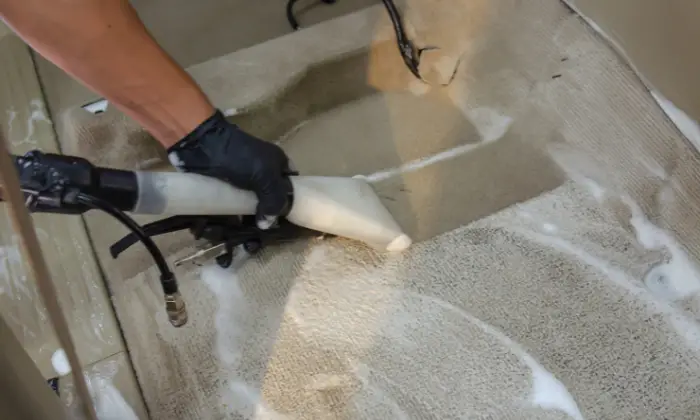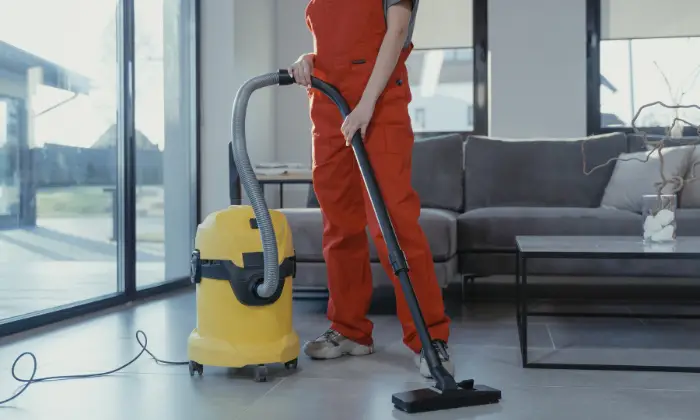Dry vacuum cleaners are best suited for picking up solid debris, while wet vacuums are designed to suck up liquid spills. Vacuum cleaners are essential household items that aid in cleaning floors, upholstery, and other surfaces.
With modern technology, vacuum cleaners are now categorized into two types: dry vs wet vacuum cleaners. While both serve the same purpose, they differ in their functionality. The dry vacuum cleaner is the most prevalent type, and it is designed to pick up solid debris such as dirt, pet hair, and dust particles.
On the other hand, wet vacuums are meant to wipe out spills, ranging from liquids to semi-liquids, such as wet soils, sludge, or puddles. This article examines the distinctions between dry and wet vacuum cleaners to help you decide which best suits your needs.

1. Understanding Dry Vacuum Cleaners
1.1 How Do Dry Vacuum Cleaners Work?
Dry vacuum cleaners are designed to clean dry surfaces and remove dust, dirt, and debris. They use an electric motor that creates suction, pulling in the surrounding air and dirt particles. The air passes through a series of filters, trapping the dirt while allowing clean air to be released back into the room. Dry vacuum cleaners, such as crevice tools and upholstery brushes, typically come with various attachments and accessories to cater to different cleaning needs.
1.2 Benefits of Dry Vacuum Cleaners
Dry vacuum cleaners offer several advantages for everyday cleaning tasks:
– Efficient dust removal: Dry vacuum cleaners are highly effective at removing dust & allergens from carpets, floors, and upholstery.
– Versatility: With a wide range of attachments, dry vacuum cleaners can tackle various surfaces and hard-to-reach areas in your home.
– Quick and convenient: They are easy to use and provide fast cleaning results, saving time and effort.
2. Exploring Wet Vacuum Cleaners

2.1 How Do Wet Vacuum Cleaners Work?
Wet vacuum cleaners, known as wet-dry or shop vacuums, are specifically designed to handle liquid spills, wet surfaces, and other liquid-related messes. These vacuums have a durable motor and a separate collection tank to hold the liquid. When operating in wet mode, the vacuum sucks up the liquid through a hose into the tank, separating it from the air. Wet vacuum cleaners also have filters to prevent debris and solids from entering the motor.
2.2 Advantages of Wet Vacuum Cleaners
Wet vacuum cleaners offer several benefits when dealing with liquid messes:
– Versatility: They can handle wet and dry cleaning tasks, making them suitable for various applications.
– Effective liquid extraction: Wet vacuum cleaners have powerful suction capabilities, efficiently removing liquid spills and floods.
– Durability: The construction and components of wet vacuum cleaners are designed to withstand exposure
To liquids, ensuring long-lasting performance.
3. Key Differences Between Dry and Wet Vacuum Cleaners
3.1 Cleaning Applications
Dry vacuum cleaners are primarily used for general cleaning tasks, such as removing dust, dirt, and pet hair from carpets, floors, and upholstery. On the other hand, wet vacuum cleaners excel in cleaning liquid spills, wet surfaces, flooded areas, and other liquid-related messes.
3.2 Filtration System
Dry vacuum cleaners typically have advanced filtration systems, including HEPA filters, which are highly efficient at capturing small particles and allergens. Wet vacuum cleaners, on the other hand, prioritize separating liquids from the air, and while they may have filters, they are not usually designed for fine particle filtration.
3.3 Handling of Liquids
Dry vacuum cleaners are not designed to handle liquids. Attempting to vacuum liquids with a dry vacuum cleaner can damage the motor and pose safety risks. Wet vacuum cleaners, however, are specifically built to handle liquids and are equipped with features that allow for safe liquid extraction.
3.4 Maintenance and Cleaning
Dry vacuum cleaners require regular maintenance, such as emptying the dust canister, cleaning or replacing filters, and checking for clogs. Wet vacuum cleaners need additional maintenance, including emptying the liquid collection tank, cleaning the tank and hoses, and ensuring proper drying to prevent mold or bacterial growth.

4. Choosing the Right Vacuum Cleaner for Your Needs
4.1 Residential Cleaning
For typical household cleaning, a dry vacuum cleaner is usually sufficient. It can effectively remove dust, dirt, and allergens from carpets, floors, and upholstery. However, investing in a wet vacuum cleaner would be beneficial if you anticipate dealing with occasional liquid spills or have specific cleaning needs that involve wet messes.
4.2 Commercial Cleaning
Wet vacuum cleaners are often preferred in commercial settings due to their versatility in handling wet and dry messes. They are commonly used in workshops, garages, restaurants, and industrial facilities where liquid spills, floods, or heavy-duty cleaning tasks are expected.
4.3 Specific Cleaning Tasks
Consider your specific cleaning requirements when choosing between a dry and wet vacuum cleaner. A dry vacuum cleaner is suitable if cleaning primarily involves dry surfaces and debris. However, investing in a wet vacuum cleaner is the more practical choice if you frequently encounter liquid spills or wet surfaces or need to clean up after plumbing incidents.
FAQs For Dry Vs Wet Vacuum Cleaners
What Is A Wet Vacuum Cleaner?
A wet vacuum cleaner is designed to clean up liquid spills and messes. It has a special motor to handle wet debris and a nozzle to extract and hold liquid waste.
What Is A Dry Vacuum Cleaner?
A dry vacuum cleaner is designed to clean up dry debris, such as dirt, dust, and pet hair from carpets, floors, and upholstery. It has a powerful suction motor and comes with several attachments to clean various surfaces.
Can Wet Vacuum Also Clean Dry Messes?
A wet vacuum cleaner can also clean dry messes like dust, dirt, and debris. It comes with different attachments and can be adjusted for power, making it versatile in cleaning all messes.
Can Dry Vacuum Also Clean Wet Messes?
No, a dry vacuum cleaner is not designed to handle wet messes as it can damage the motor and other components. Attempting to clean a wet mess with a dry vacuum can result in electrocution and other hazards.
Which Is Better For Cleaning Carpets, Wet Or Dry Vacuum?
Both wet and dry vacuums can effectively clean carpets, but it depends on the type of stain or mess you need to clean. Wet vacuums are better for liquid spills, while dry vacuums are perfect for deep cleaning carpets and removing stains.
How Often Should I Replace The Filters On My Vacuum?
The frequency of filter replacement depends on usage and the type of vacuum cleaner. Generally, filters should be replaced every 3 to 6 months. However, HEPA filters may need to be replaced more frequently to maintain optimal vacuum performance.
Conclusion
After considering the pros and cons of both dry and wet vacuums, it’s evident that both have their unique roles to play in keeping your home clean. If you need to clean up dust and debris on carpets and hard floors, a dry vacuum is an excellent choice.
On the other hand, wet vacuums are ideal for handling tough stains, spills, and messes that regular cleaning can’t get rid of. Ultimately, your choice will depend on your cleaning needs and preferences. However, investing in a high-quality vacuum that meets your cleaning requirements, suits your budget, and is built to last is crucial.
Regardless of which type of vacuum you choose, remember to keep it well-maintained, clean it regularly, and use the right attachments and accessories to enhance its performance. With the right vacuum, you’ll have a clean home free of dust, dirt, and debris – and that’s something everyone can appreciate!





